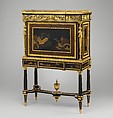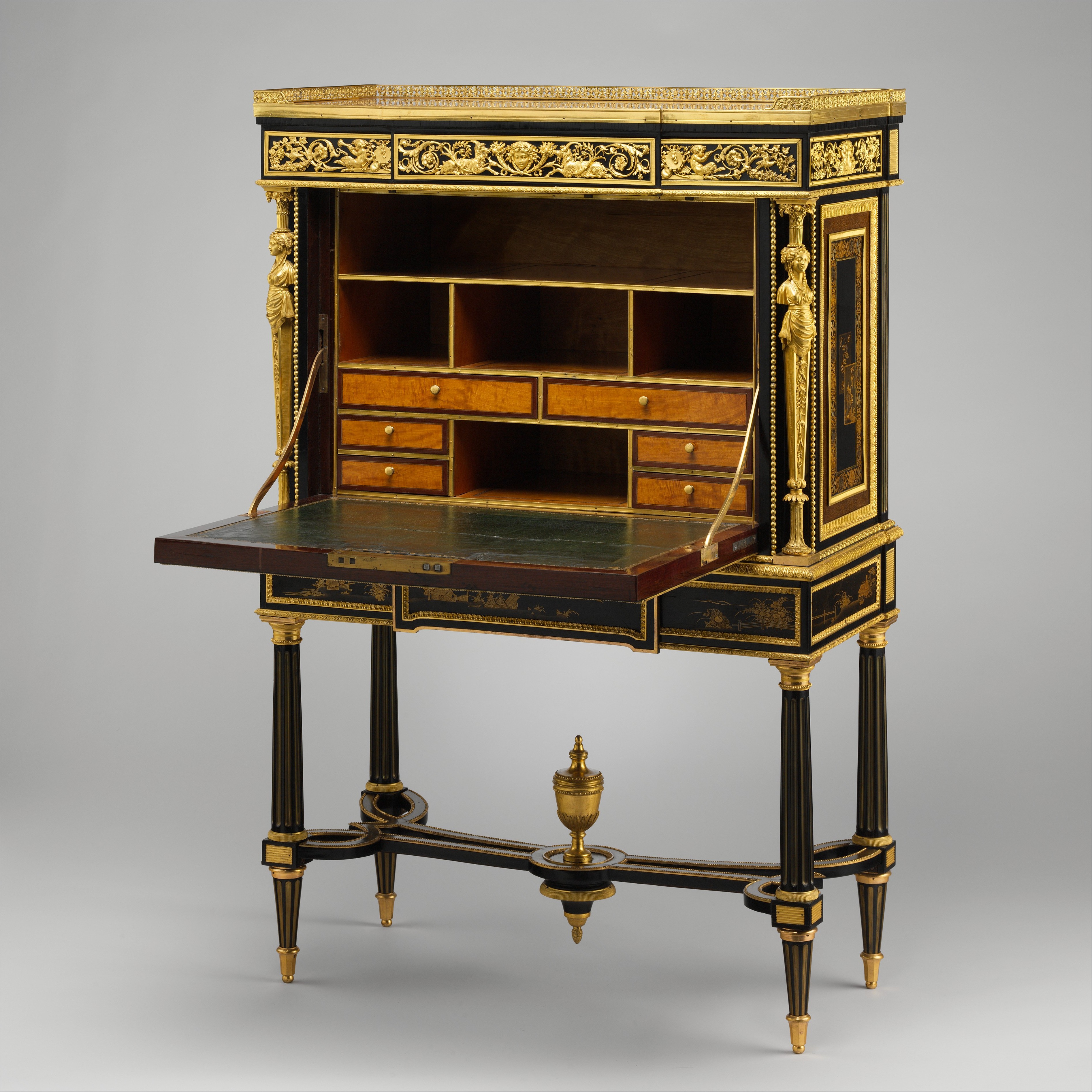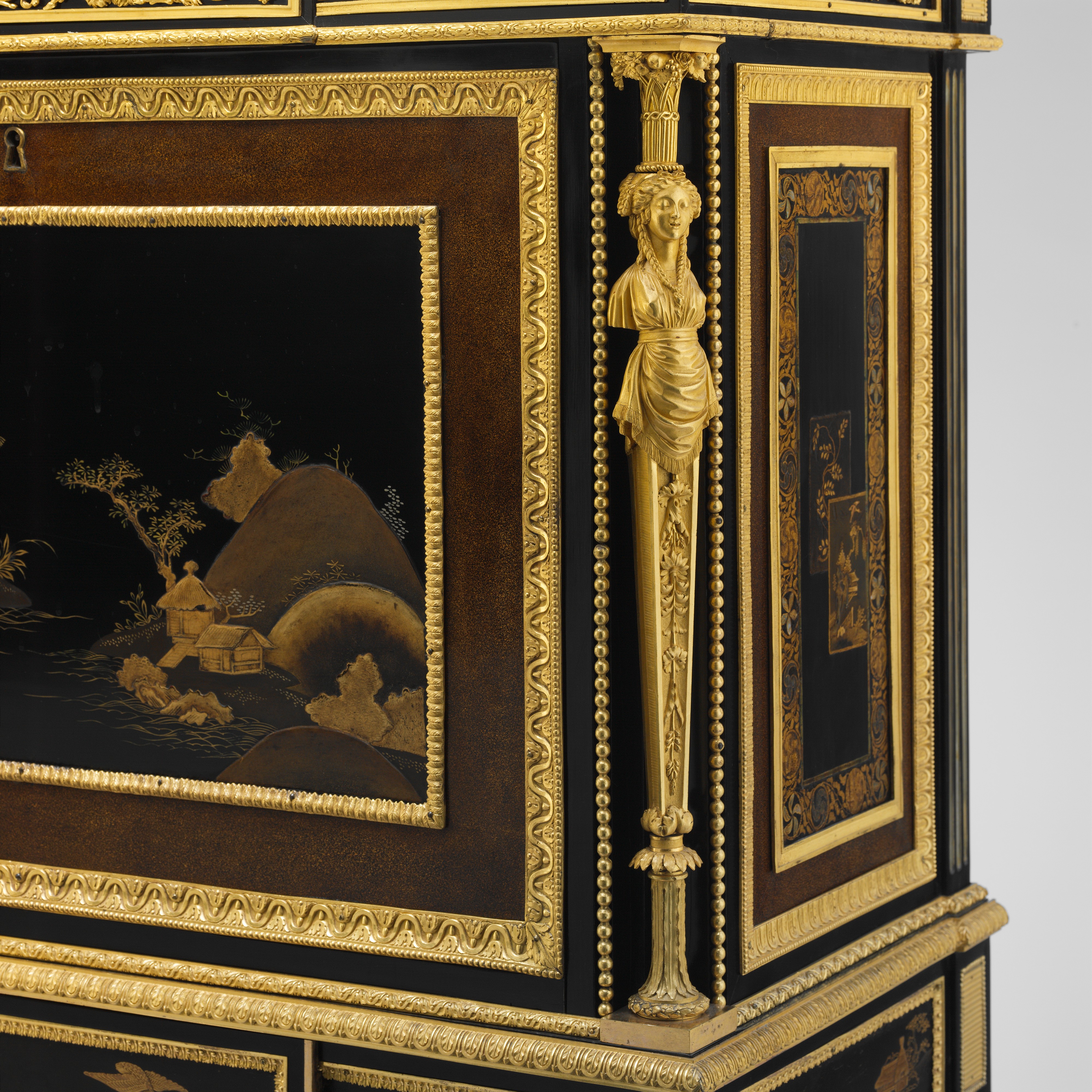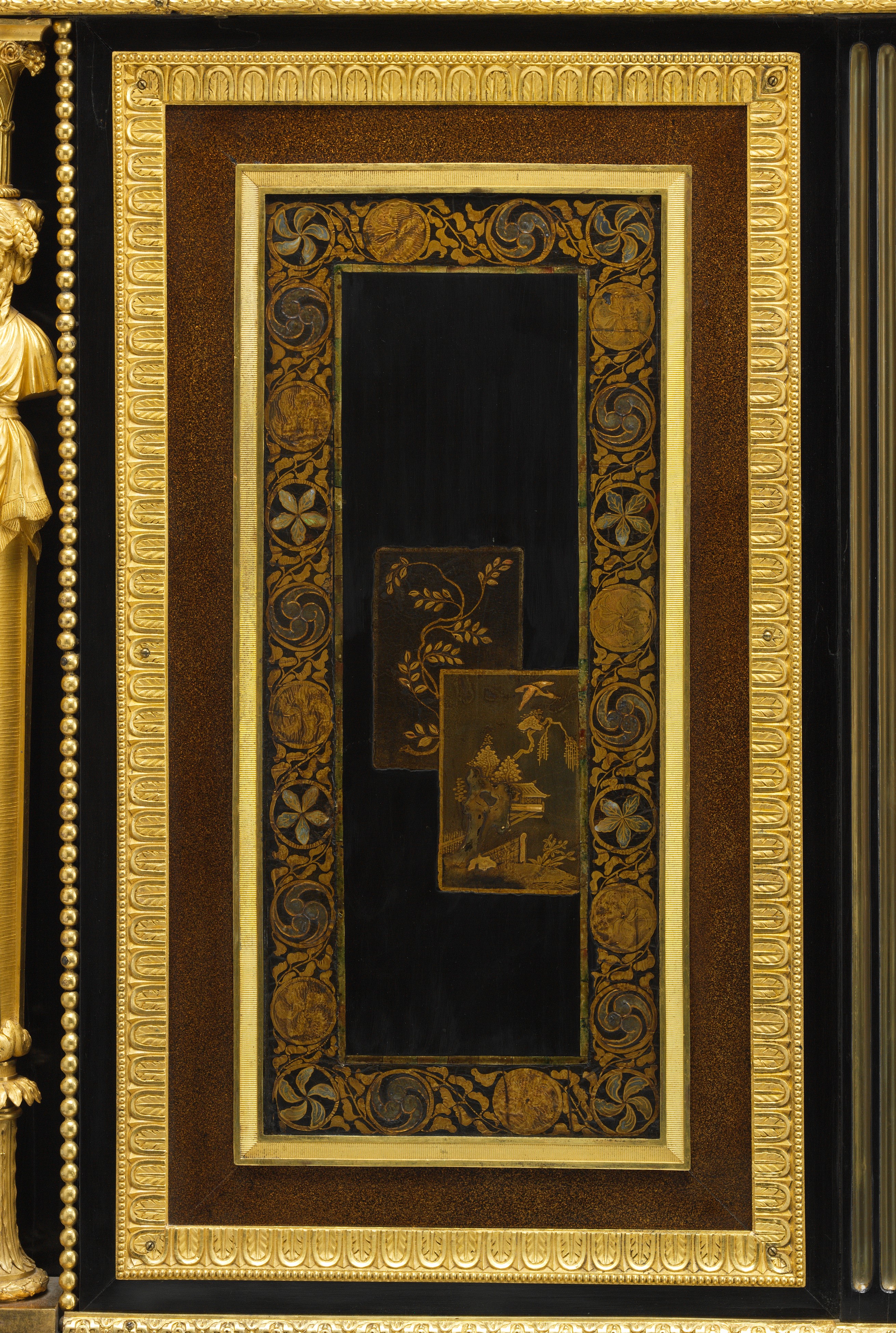Drop-front secretary on stand (secrètaire à abattant or secrétaire en cabinet) (one of a pair) (part of a set)
Adam Weisweiler French
On October 7, 1790, many European royals and aristocrats were gathered in Frankfurt to attend the coronation of Leopold II as Holy Roman Emperor. Ferdinand IV (1751–1825), king of Naples, was among those present for this solemn event. Married to the new emperor’s sister, Maria Carolina, Ferdinand was the brother-rin-law of both Leopold and Marie-Antoinette. At this time of social and political instability caused by the French Revolution, the Parisian marchand-mercier Dominique Daguerre and his business partner, Martin-Eloi Lignereux, traveled to Frankfurt as well. They were looking for new clients and lucrative commissions. This secretary (or its pair) and a matching commode were among the luxury goods they brought along with them and offered for sale. Mounted with Japanese lacquer and exquisite gilt bronze, both pieces were purchased by the king of Naples, who ordered an additional secretary and a matching rolltop desk in 1792. The set of furniture was placed in Ferdinand’s study at the royal palace of Caserta. Jakob Philipp Hackert (1737–1807), who as court painter to Ferdinand IV created gouaches for display in the king’s study, described the interior in a letter of December 4, 1792, to his friend Count Dönhoff in Berlin: "Everything is bronze and lacquer, the furniture is from Paris, the room is beautiful and splendid and cost thirty thousand ducats with all the decoration, which is simple but precious."
The lacquer furniture was the work of Adam Weisweiler, who stamped the back of the secretary. He worked almost exclusively for marchands-merciers and especially for Dominique Daguerre, who supplied Weisweiler’s Neoclassical furniture to an international clientele. The drawers of the breakfront commode, known as a commode à vantaux during the eighteenth century, are enclosed behind a double-hinged and bolted folding door to the right, and a single door to the left. The sculptural half-figure corner mounts and those of the frieze, which include scrolling acanthus and ivy leaves, goats, and playful infant fauns, add a nearly unrivaled richness to this set of furniture. Because of their outstanding quality they have in the past been attributed to the bronze worker Pierre Gouthière (1732–1813). They might, however, equally well have been the work of François Rémond, who is known to have cast, finished, and gilded similar bronzes for Daguerre.
Due to rights restrictions, this image cannot be enlarged, viewed at full screen, or downloaded.
This artwork is meant to be viewed from right to left. Scroll left to view more.





